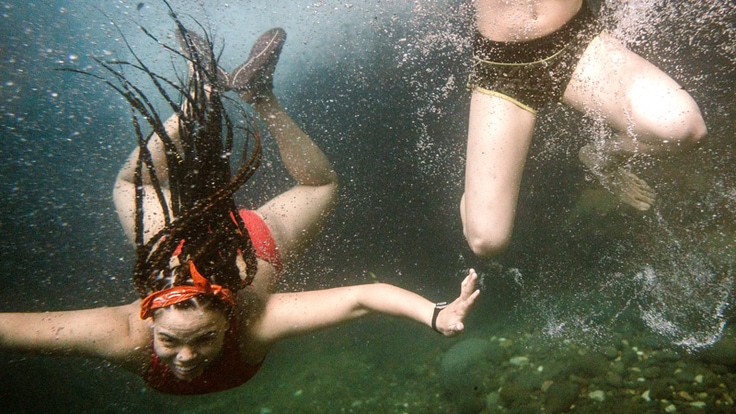Whether you're stand up paddle boarding, surfing or swimming laps at the pool, you'll want a swimsuit that fits well, moves with you and stays put. Finding the right active swimwear will depend on a number of personal choices: how active you plan to be, how much support you need or how much skin you want to show. Luckily, the range of swimsuit styles, patterns and silhouettes available makes it easy to find a suit that's flattering and functional.
When choosing a swimsuit for your favorite water activities, consider the following four factors:
- Choose your swimwear style based on your activity: How you'll move and how much sun exposure you'll face will help guide your choices. If you spend a lot of time ducking under waves, for example, pick a one-piece suit or a top with racerback or thick crisscross straps so your suit will stay secure.
- Decide how much coverage you want and where you want it: For example, if you plan to spend the day at the beach sunbathing and snorkeling, you might choose a rashguard and board shorts that you can pull over a sporty bikini when you're ready to limit your sun exposure.
- Decide what fabric and design features you want: Quick-drying fabrics make it easy to go from playing in the water to lounging poolside. Zipped board-short pockets come in handy for holding essentials while you're out on your paddle board.
- Find a style that's comfortable: You want to spend more time focusing on your water activity and less time adjusting your bottoms or making sure your top stays put. Whenever you can, it's best to try the suit on and move around in it to find a good fit and make sure it doesn't ride up.
Types of Swimwear
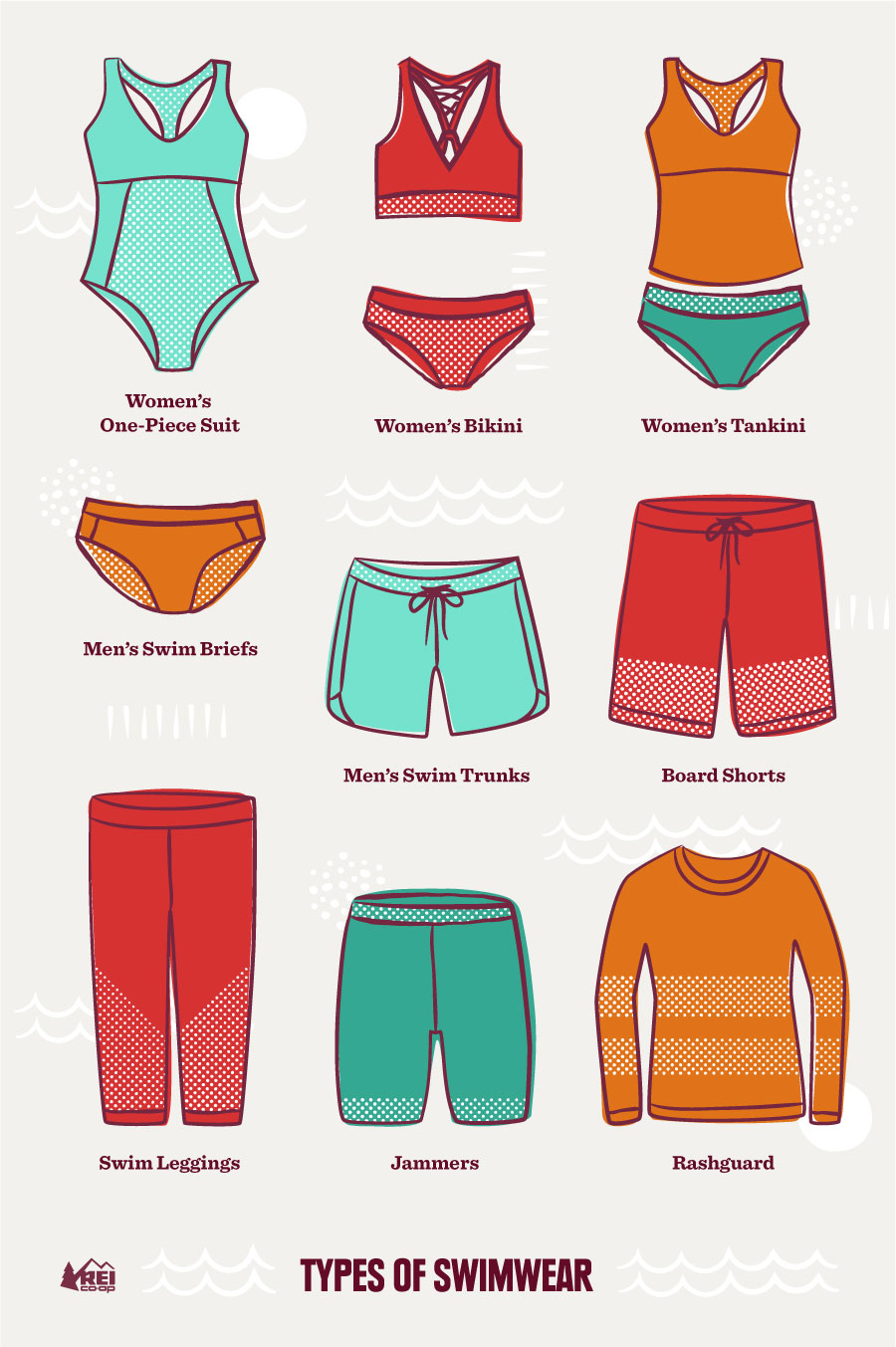
One-piece women's suits: These have come a long way in style and function. Because most active-style one-pieces tend to stay in place better than two-piece suits, they're a great choice for sports such as diving, bodysurfing or stand up paddle boarding where you'll spend time falling or diving into the water or waves. If you plan to do lap or competitive swimming, you may opt to choose snug-fitting, cross-back streamlined suits designed for minimal fuss and drag in the water. (For triathlon-specific swimwear advice, see the REI Expert Advice article, Triathlon Gear: How to Choose.)
Two-piece women's suits: With swim top and bottoms sold separately, it's easy to customize two-piece suits to suit your watersport and body type. Many active brands design performance two-piece suits to stay in place during many watersports. Two-piece suits are also more convenient than one-piece suits for bathroom breaks.
Tops on two-piece suits come in a wide range of styles in two main categories:
- Bikini: These include the classic triangle top, bra or bralette-style top.
- Tankini: These tank tops usually cover the full midriff (crop tops may fall somewhere between the two styles.)
Swim bottoms range in coverage, from traditional bikini bottoms with a higher leg cut to more full coverage. Other options for coverage include swim skirts and boy short styles.
Men's swim trunks: Casual swim shorts, or trunks, range from short to above the knee. They typically have drawstrings, snaps or elastic waistbands; some come with a mesh inner brief or lining for extra support. You can opt for a tailored or baggy look.
Men's swim briefs: These are form-fitting, brief-shaped swimsuits usually worn for performance sports such as lap swimming and water polo where speed and free range of motion are essential.
Swim leggings: These long swim bottoms, also called swim tights, give you maximum sun protection from your waist down to your shin or ankles. They're great choices for paddle boarding, surfing and snorkeling or other sports where you'll spend long hours in the sun and water and don't want to continually reapply sunscreen. Depending on the fabric, they can keep you warmer in chilly waters.
Board shorts: These shorts vary in length. Some women's board shorts run fairly short (2-inch inseam), while some men's board shorts fall well below the knee to help protect thighs from rubbing against surfboards or paddle boards.
Jammers: These snug-fitting shorts hug thighs and bottom (they're similar to a bike short without the padding). They're great for lap or competitive swimming because there's minimal drag.
Rashguards: These popular shirts provide protection from sun and chafing. Rashguards shield you from harmful UV rays during long hours of paddling, surfing, snorkeling or swimming. They're lightweight, stretchy and can be loose- or form-fitting. The shirts come in many styles for versatility—cap-sleeve, short-sleeve, ¾-length, long-sleeve, pullover or zip-top.
Features to Consider in Active Swimwear
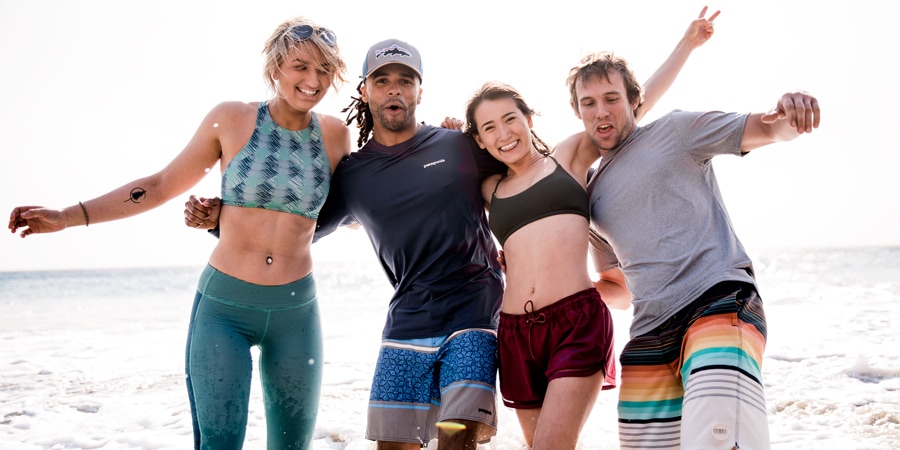
Fast-drying fabric. If you plan to spend a lot of time in and out of the water, consider choosing swimwear that dries quickly. Quick-drying suits also help prevent chafing since they wick moisture away from your skin. Thicker fabrics or suits with cotton blends may not dry as fast.
Sun-protective fabric. Sun-protective fabric helps shield you from harmful ultraviolet rays that can lead to sunburn. Clothing is rated on a UPF (ultraviolet protection factor) scale of 15 to 50+ based on its effectiveness against ultraviolet A (UVA) and ultraviolet B (UVB) light. The higher the UPF number, the more protective it is. To find out more, read our article on sun protection clothing basics.
Inner liners: Some men's swim trunks come with inner mesh brief or other lining to help prevent chafing and provide extra coverage. Women's suits may include liners for greater opacity when wet, and some have special linings that help the suit cling to your skin and keep it from slipping.
Removable bra cups: Some women prefer the enhanced silhouette and modesty coverage they get with padded bra cups, but those who dislike them can easily remove them.
Pockets: Swim shorts that come with zippered side or rear pockets or inside mesh pockets let you store a car key, lip balm or other small essentials while doing sports such as paddling or kitesurfing.
Swimsuit strap styles: The straps on women's swimsuits can be fashionable, but for active sports the function is essential. When choosing a suit, keep in mind that wider straps are often more comfortable than narrower ones and usually provide better support.
- Adjustable straps: Adjustable straps allow you to loosen or tighten the straps to fit your specific body and come in handy when straps loosen with use.
- Back closure: Bathing suit tops with back closures can make tops easier to put on and remove, especially when the fabric is wet.
- Racerback / crisscross: These strap styles allow for a g oodrange of arm and shoulder movement while maintaining a secure fit.
- Halter: The straps on halters tie around your neck and are a good support choice for those with larger busts (though be aware that they can also cause some discomfort around the neck).
Swimsuit Fit
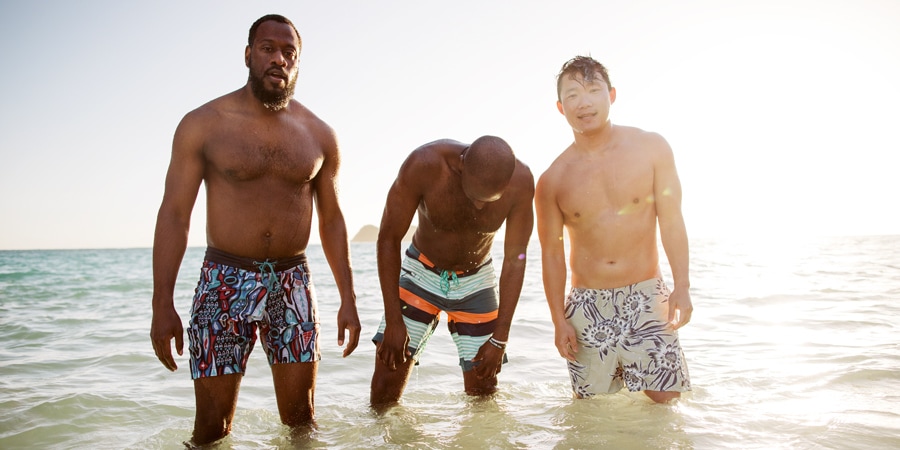
It's best to try a swimsuit on and move around in it so you know where it's too tight or sags.
How should a swimsuit fit? For fitted styles, you want your suit nice and snug but not overly constricted. If you keep tugging on your suit because it's riding up on you or the straps or waistband dig into you, it's probably a sign to go up in size. If the straps fall off easily, the waistband seems loose or you see gaps, extra folds or wrinkles of fabric, try a size smaller.
Understanding bra fit and support: Many swimsuit bras come with removable soft cups to give you extra shape and modesty. Some suits have built-in shelf bras or underwire to support larger busts (make sure the underwire lays flat and doesn't pinch anywhere.)
For more tips on bra fit and support, see our article on How to Choose a Sports Bra. Note that many of the same fit guidelines hold true for swimsuits and sports bras.
Tips for Choosing a Swimsuit
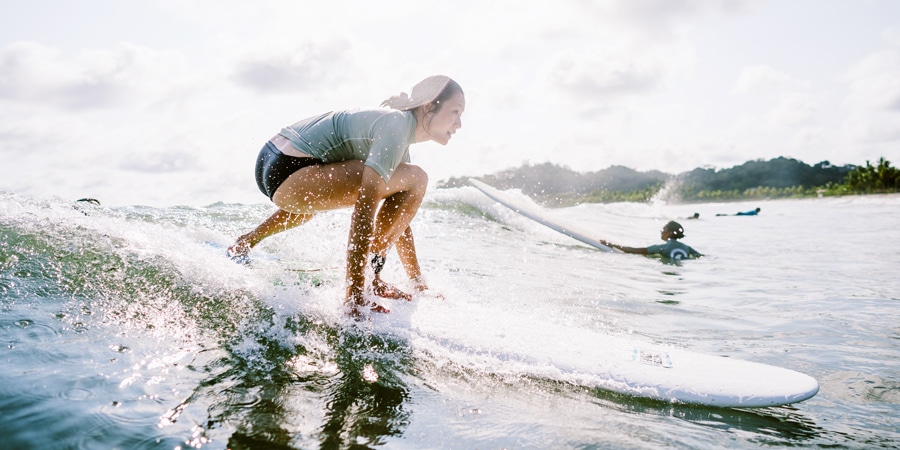
One-piece or two? Boy short or bikini briefs? More coverage or less? Ultimately the answer when choosing swimwear is highly personal.
For more support up top: Consider one-piece suits with a halter and adjustable straps in the back, tops with higher necklines, or suits with thicker shoulder straps for more bust support. Other features to look for to keep everything in place: built-in shelf bras, back closures or elastic bands that run under the busts. For swim tops, look for a more generous cut around the breast so your sides are fully covered. Tankinis are another great option if you're fuller-busted.
For high-intensity water sports: If you spend a lot of time diving into waves, you don't want to worry about your bottoms rolling up or your top falling down. Look for racerbacks that keep straps off your shoulder, secure cross-back straps or drawstrings that allow you to cinch tops or bottoms for a more secure fit.
For heat and sun protection: Swimwear often comes with lots of layering potential to help you regulate your temperature and exposure throughout the day. You may start with a bikini top in the morning and throw on a rashguard or swim cover-up when the afternoon sun blares down on you. Throw on a pair of board shorts after a paddle or zip up with a sun-protective hoodie.
